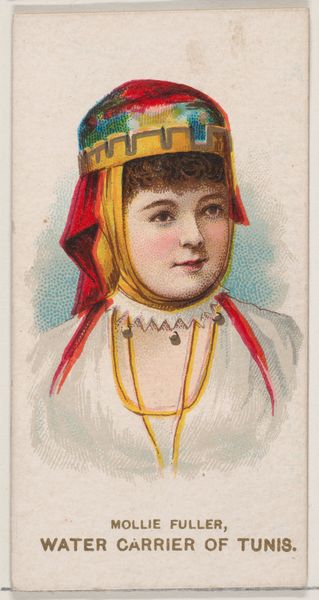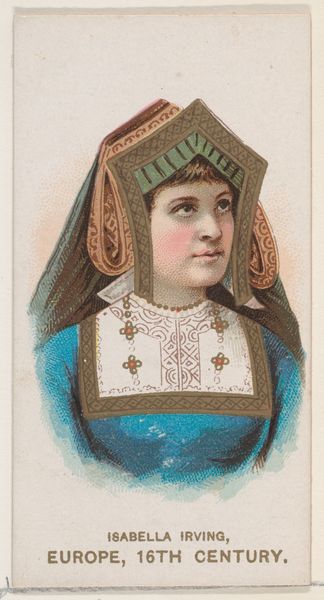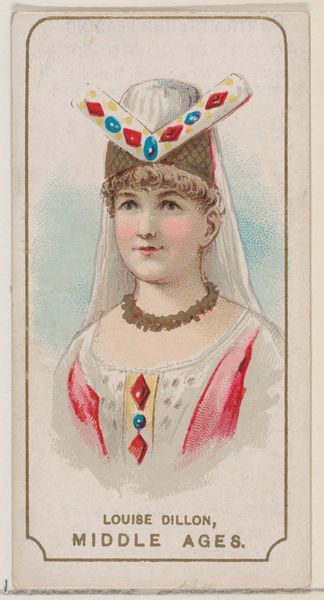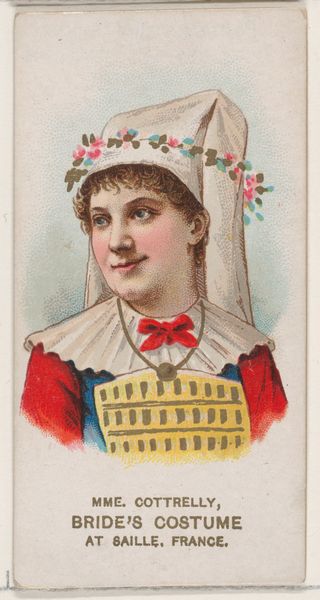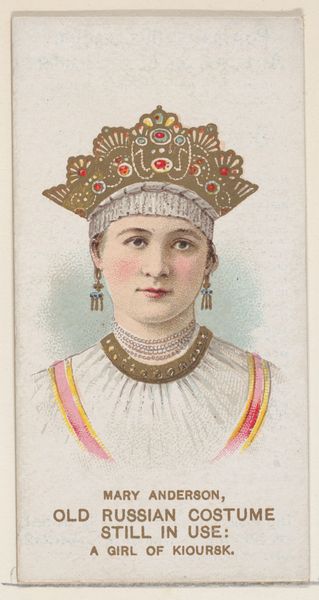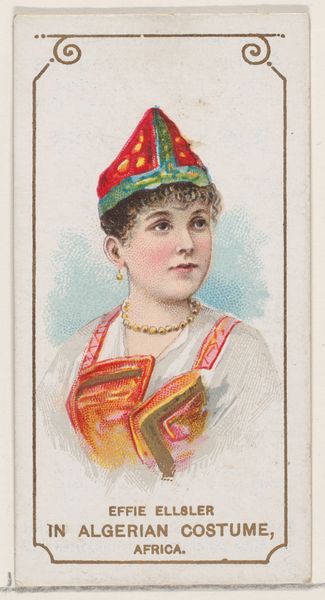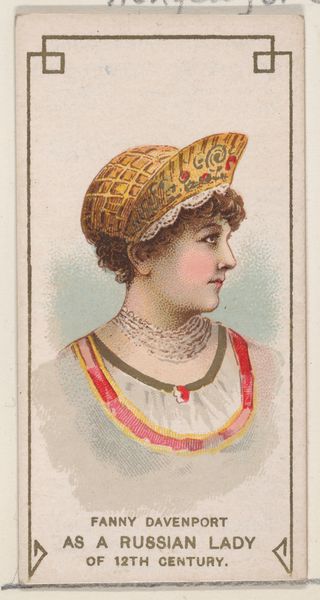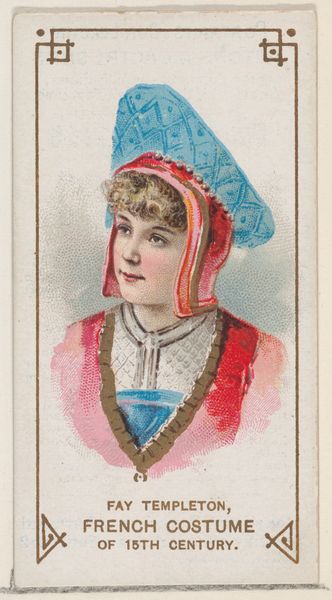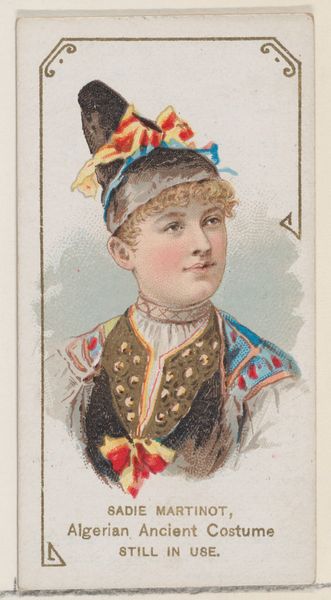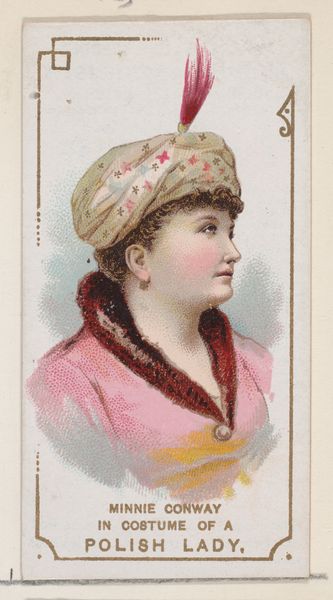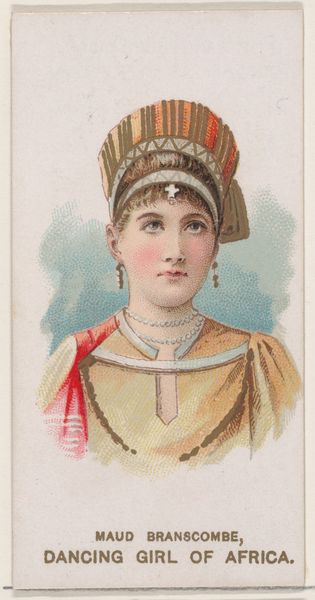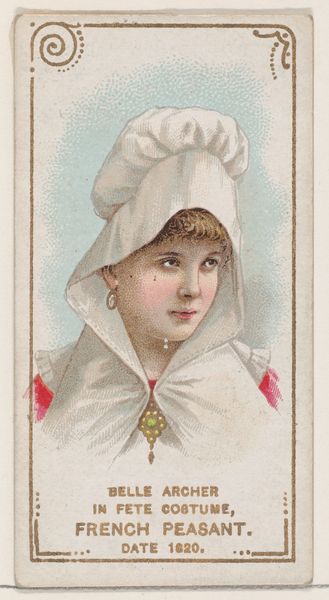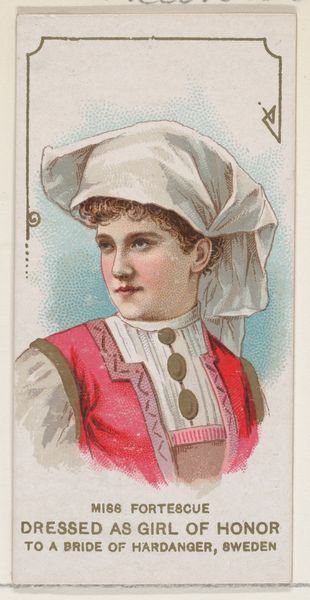
Agnes Folsom as a Woman of Guimperle, from the set Actors and Actresses, Second Series (N71) for Duke brand cigarettes 1888 - 1890
0:00
0:00
drawing, coloured-pencil, print, photography
#
portrait
#
drawing
#
coloured-pencil
# print
#
impressionism
#
caricature
#
photography
#
coloured pencil
#
genre-painting
#
realism
Dimensions: Sheet: 2 3/4 x 1 1/2 in. (7 x 3.8 cm)
Copyright: Public Domain
Curator: Isn't this quaint? What strikes you first about it? Editor: A certain…sterility. The woman's expression is so neutral, almost doll-like. But the details of her costume, that wild headpiece, suggest something more complex. Curator: Right? This little card, titled "Agnes Folsom as a Woman of Guimperle," comes from a set of cards packaged with Duke brand cigarettes, dating roughly between 1888 and 1890. It’s part of a larger series called "Actors and Actresses, Second Series.” Editor: So, not really about Agnes Folsom or, necessarily, the woman she’s portraying but an image, a representation, flattened and commodified. We have an actress playing a local of Guimperle, a commune in Brittany. Curator: Exactly. These cards were essentially miniature advertisements. The portrait is done in coloured pencil and print. It presents a certain vision of the Breton woman, but how accurate can it be? Editor: Accuracy is hardly the point, is it? It's about constructing an image, playing into existing exoticized notions, solidifying ideas around regional identity, femininity, and marketing cigarettes at the same time. What is she selling here: cigarettes or the region? Curator: A little bit of both, I reckon. There’s a certain charm, though, isn’t there? The colours are quite vibrant. The flower crown is adorable. A woman who looks both dignified and romantic, somehow. Editor: That “charm” is precisely the mechanism through which ideology operates. The flowers soften, make digestible, a project rooted in exoticism, a visual reduction. A flattening in service of, well, selling things. Curator: I see your point, of course. And it’s valid. Still, you can’t deny the artist's skill. The subtle shading, the delicate lines. There's a genuine effort to capture a specific beauty. Editor: An effort that, regardless of intention, gets tangled in power dynamics, in the visual consumption of "otherness." It serves as a fascinating snapshot into the period's sensibilities but also a reminder of how images can simultaneously enchant and obscure. Curator: Well, now I can't look at a cigarette card the same way again! All the same, it remains a little gem. I see beauty, and a reflection of a bygone era’s ideals, however skewed they might be. Editor: Perhaps, ultimately, that tension—between beauty and ideology—is where the image finds its resonance, compelling us to consider not just what we see, but how and why we are seeing it.
Comments
No comments
Be the first to comment and join the conversation on the ultimate creative platform.
